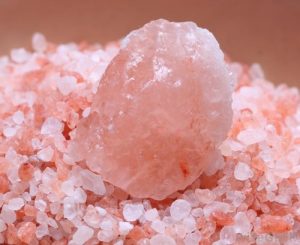Pink Himalayan and Sel Gris (Celtic grey sea salt) are our favorites. True Sel Gris is harvested exclusively with wooden instruments preventing contaminants such as aluminum that may be present in refined salts. It contains an abundance of trace sea minerals and is relatively low in overall sodium chloride content (83-87%). As one of the six tastes, lavana balances vata due to its heavy moist properties, and stimulates digestion and decongests kapha without overly aggravating pitta.
Learn more about lavana, one of the six rasas or tastes according to Ayurveda, from teacher and mentor Alakananda Ma at Alandi Ashram Ayurveda and Gurukula:
“Today, we are going to discuss the Ayurvedic approach to salt. What are the five kinds of salt used in medicinally and for seasoning in Ayurvedic tradition? This can sometimes be a confusing topic because many types of salt we have today were not available in ancient India, and vice versa.
As we know, the salty taste is one of the six tastes. Everyone needs a small amount of the salty taste in each meal; yet an excess of the salty taste can prove harmful to those of pitta and kapha constitutions.
We speak of table salt, iodized salt and kosher salt. Neither [of the first two] were used prior to the modern industrial era. Table salt is essentially a refined salt containing mainly sodium chloride. It also contains an anti-caking agent such as sodium aluminosilicate. Most table salts also contain added iodine, making them iodized. Iodine was first added in the US in 1924 in an effort to combat goitre—enlarged thyroid due to iodine deficiency. Soils in the so-called goitre belt, which includes the Great Lakes and the Northwest, are iodine deficient; so iodized salt was introduced in an effort to remedy this situation. (Note that iodine deficiency in food is really a matter of where your food was grown rather than where you live). Kosher salt is a coarse-grained salt; it may or may not contain iodine and may or may not contain an anti-caking agent. Such coarse-grained salt is used in the process of koshering meat; hence it should really be called koshering salt rather than kosher salt.
Moving on to consider the Ayurvedic approach there are several types of salt with distinctive properties. These are arranged in a specific order, from the least heating to the most heating; from the one that provokes doshas the least to the one that provokes them the most.”
Click here to continue reading.
Enjoy!

